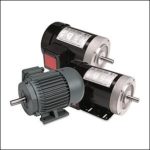WBV exercises and home solutions for better circulation
Poor circulation isn’t always the result of a sedentary lifestyle; other factors, such as wearing clothes that are too tight or inadequate shoes, or spending several hours sitting at work, can also lead to an impaired blood flow.
In most people who suffer from poor circulation, this cannot be considered a condition, as it doesn’t alter one’s overall health and doesn’t interfere with their daily activities. Typical symptoms of a poor blood flow include a sensation of numbness or tingling in the limbs, stinging pain or muscle cramps.
Although unpleasant, these aren’t life threatening, but they can become or lead to serious health issues, as blood carries oxygen and nutrients throughout the entire body. When your blood vessels cannot efficiently transport blood to cells, the mentioned symptoms can start manifesting, and they can be accompanied by tiredness, moodiness, concentration problems, vision problems and so on.
Potential causes of poor circulation
Poor circulation is more likely to be present in people with arterial issues, heart conditions or in diabetic and obese patients. People with PAD (peripheral artery disease) suffer from poor circulation, as their blood vessels are narrowed. Those suffering from atherosclerosis can also have circulation problems, as the walls of the blood vessels become stiffer when plaque builds up. In both cases, pain and numbness or muscle cramps can be present.
Other potential symptoms of poor blood flow include painful and swollen legs, blood clots, cold feet and hands, puffiness and swelling of the tissues in hands, feet and even in the face, or in more severe cases, leg ulcers, varicose veins, wounds that heal very slowly, scaly and dry, itchy skin, discoloration, burning sensation or rash and redness of the skin.
Hair loss, weak nails, changes in appetite, energy levels and mood, constipation, cramps and a slow metabolism, as well as food cravings, poor concentration and sleepiness can be signs of impaired blood circulation. Chest pain due to the reduced amount of oxygen transported by the blood, blood clots that increase the risk of stroke, cellulitis and high blood pressure can be favored by poor circulation.
Depending on what causes your circulation problems, you may or may not need medical help. In most cases, it’s enough to get more active, use some compresses, massage the painful area and improve your diet and lifestyle habits to stimulate blood flow as well, but there are also situations when medications or other forms of therapy are needed.
In diabetes patients for example doctors may recommend a specific treatment that includes insulin, exercising and dieting. In those with varicose veins, laser or endoscopic vein surgery may be necessary. Also, one may be advised to wear compression socks if spending several hours in the same position.
Home solutions for stimulating blood flow
The easiest thing you can do to prevent poor blood flow is to avoid wearing tight-fitting clothes and uncomfortable shoes. Then, you should pay attention to your position and posture during work, and move for a few minutes every hour or so, to stimulate circulation.
It may also be helpful to apply cold packs and alternate them with hot compresses, as this increases the flow of blood and tissue oxygenation. Also, it helps relax the muscles and decreases muscle cramps and spasms, relieving pain. Cold compresses are excellent for reducing swelling and inflammation.
Besides these remedies, you can try to add more garlic, tumeric, ginger or cayenne to your diet, as they’re known to help stimulate blood flow. Fruits and veggies rich in vitamin C are also recommended, and so is Ginkgo biloba, which seems to work by opening the blood vessels and improving the circulation of blood.
If you’re already doing all these with no success, try massaging the painful and swollen areas, and do your best to exercise more often. Exercise is one of the best solutions for stimulating blood and lymph flow and preventing the accumulation of excess water, as well as cold and swollen feet.
Although both cardio and weight lifting are good for stimulating the blood flow, aerobic and cardio exercises that make your heart beat faster are better. Or if you prefer home workouts, you can always try high intensity intervals or whole body vibrations. The Hypervibe WBV machines are perfect for such purposes and they provide a lot of additional health and fitness benefits, so it’s surely worth investing in a vibration platform for home use.
Here are some exercises you can do on your Hypervibe whole body vibration machine for improving the circulation of blood and decreasing muscle cramps and feet swelling and pain.
1. Upper spine massage
We’ll start with an exercise that warms up the upper body and relaxes your back and spine muscles. Set the frequency of the machine at 8 Hz and keep your head in line with your spine, to avoid head vibrations. Your elbows should be on the platform, at #2-3, and your abs engaged. Stay in this position for 1-2 minutes.
2. Shoulder massage
The names of these positions are descriptive enough, as you can see, so this second exercise is meant to relax your shoulders and the muscles surrounding them. Maintain the same settings as in exercise 1, but extend your arms, and place the palms slightly farther from the machine’s center if needed, at #3. Maintain for 1-2 minutes.
3. Lumbar massage
Time to move to some standing WBV exercises. Place your feet at #3 and set the frequency at 8 -10 Hz, keeping the knees slightly bent and the abs engaged. You should feel the vibration in your lower back. Maintain the position for 1 minute.
4. Lumbosacral massage
From the previous position, place your elbows on the machine’s handles and extend your legs, keeping the core engaged. Frequency should be set at 12 Hz and your feet should be positioned at #2. Maintain for 1 minute.
5. Hamstring massage
Stand on the platform with your back straight and your feet extended. Set the frequency at 15-18 Hz and maintain the position for 1 minute.
6. Gluteal massage
Switch the position as you can see in the picture, and lower the frequency to 12-15 Hz. Keep your legs extended and your abs engaged. Maintain the position for 1 minute.
7. Quads massage
Place your exercise mat on the floor and lie down in front of the WBV platform, with your quads on the machine. Frequency should be set at 15-18 Hz. Maintain the position for 1 minute.
8. Calf massage
Place your exercise mat on the floor and lie down in front of the WBV platform, placing your calves on the machine, as you can see in the picture. Keep the frequency at 15-18 Hz or lower if the intensity is too high, and exercise for 1-2 minutes.
Have something to add to this article? Comment below or join our Facebook community and share your thoughts with us there.







